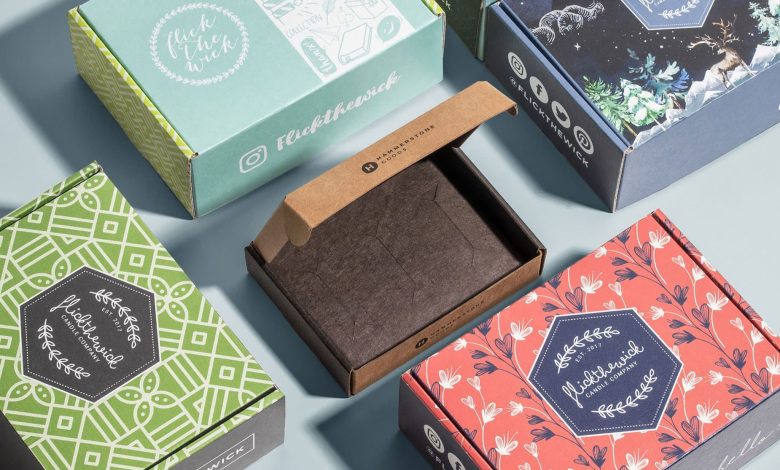
In recent years, the use of biodegradable and compostable materials for custom packaging has become increasingly popular.
These materials have several advantages over traditional packaging materials, including their ability to break down naturally, reducing waste and pollution.
This article will explore the role of biodegradable and compostable materials for custom packaging and their benefits for businesses and the environment.
What are Biodegradable and Compostable Materials?
Biodegradable materials are those that can break down naturally through the action of microorganisms.
These materials can be made from a range of sources, including plant-based materials, such as cornstarch or sugarcane, or biodegradable plastics made from petroleum products.
Compostable materials are those that can be broken down in a composting environment, which is a controlled process that involves the breakdown of organic matter by microorganisms.
Compostable materials are typically made from plant-based materials, such as cornstarch, sugarcane, or bamboo.
While there are numerous factors that influence the cost of custom packaging, we’ll focus on three of the most common here: material type, package size and shape, and quantity ordered.
Benefits of Biodegradable and Compostable Materials for Custom Packaging
Reducing Waste
Biodegradable and compostable materials can help reduce waste in several ways. Traditional packaging materials, such as plastics, take hundreds of years to decompose and can contribute to pollution and waste.
Biodegradable and compostable materials, on the other hand, can break down naturally, reducing the amount of waste in landfills and oceans.
Environmental Sustainability
The use of biodegradable and compostable materials for custom packaging can help reduce the environmental impact of packaging.
These materials are typically made from renewable resources, such as plant-based materials, which are more sustainable than petroleum-based plastics. Biodegradable and compostable materials also produce fewer greenhouse gases during production, making them a more environmentally friendly option.
Branding Opportunities
Using biodegradable and compostable materials for custom packaging can also provide businesses with branding opportunities.
Consumers are becoming increasingly concerned about the environmental impact of their purchases, and businesses that use sustainable packaging materials can appeal to these environmentally conscious consumers.
Using biodegradable and compostable materials can also help businesses differentiate themselves from their competitors and promote their commitment to sustainability.
Cost-Effective
While biodegradable and compostable materials may initially be more expensive than traditional packaging materials, they can be cost-effective in the long run.
Businesses that use sustainable packaging materials can save money on waste disposal costs and may also benefit from increased sales due to their commitment to sustainability.
Regulatory Compliance
Many countries are implementing regulations to reduce waste and promote sustainability, and businesses that use biodegradable and compostable materials for custom packaging can comply with these regulations.
By using sustainable packaging materials, businesses can demonstrate their commitment to sustainability and avoid potential fines or penalties for non-compliance.
Types of Biodegradable and Compostable Materials for Custom Packaging
There are various types of biodegradable and compostable materials available for custom packaging, including biodegradable plastics, paper-based materials, and plant-based materials.
Each material has its unique properties, benefits, and limitations that businesses should consider when choosing the most suitable packaging material.
Manufacturing Process of Biodegradable and Compostable Materials

The manufacturing process of biodegradable and compostable materials involves converting renewable resources, such as plant-based materials, into packaging materials that can break down naturally. The process typically involves several stages, including material selection, processing, and testing to ensure the materials meet the required standards for biodegradability and compostability.
Biodegradable and Compostable Packaging Design
Designing biodegradable and compostable packaging requires careful consideration of several factors, such as the intended use of the packaging, the product’s size and weight, and the materials’ properties.
Packaging designers should also ensure that the packaging is easy to compost or biodegrade, minimizing its impact on the environment.
Advancements in Biodegradable and Compostable Materials
Researchers and manufacturers are continually developing new biodegradable and compostable materials with improved properties, such as increased strength, flexibility, and durability.
These advancements are helping to make sustainable packaging more accessible and cost-effective for businesses.
Challenges with Biodegradable and Compostable Packaging
Despite the benefits of biodegradable and compostable packaging, there are also challenges that businesses should consider.
For example, some biodegradable and compostable materials may require specific composting conditions to break down naturally. And improper disposal can result in contamination of the environment.
Businesses must also consider the cost and availability of these materials compared to traditional packaging options.
Consumer Education and Communication
To fully benefit from biodegradable and compostable packaging, businesses must also educate consumers on proper disposal and composting practices.
Consumers must understand the benefits of sustainable packaging and how to dispose of them correctly to ensure their environmental impact is minimized.
Businesses Successfully Implementing Biodegradable and Compostable Packaging
Several businesses have successfully implemented biodegradable and compostable packaging, achieving sustainability goals and enhancing their brand image. These case studies can provide insights into the benefits, challenges. And best practices of using sustainable packaging materials and inspire other businesses to adopt similar practices.
Future Outlook for Biodegradable and Compostable Packaging
The demand for sustainable packaging is expected to continue growing as consumers become more environmentally conscious. And businesses face increasing regulatory pressure to reduce their environmental impact.
The future outlook for biodegradable and compostable packaging is promising, with ongoing advancements in materials, design, and manufacturing processes making sustainable packaging more accessible and cost-effective for businesses.
Conclusion
Biodegradable and compostable materials offer several benefits for custom packaging. Including reducing waste, promoting environmental sustainability, providing branding opportunities. Being cost-effective, and complying with regulations.
As consumers become more environmentally conscious, the use of sustainable packaging materials is likely to become even more important for businesses.
By using biodegradable and compostable materials for custom packaging. Businesses can reduce their environmental impact, appeal to environmentally conscious consumers, and promote their commitment to sustainability.
FAQs
Q: What is biodegradable packaging?
A: Biodegradable packaging is packaging material that can be broken down by natural biological processes. Such as microorganisms or fungi, into natural substances like water, carbon dioxide, and organic matter.
Q: What is compostable packaging?
A: Compostable packaging is packaging material that can be broken down through composting. A process that turns organic matter into nutrient-rich soil.
Q: How are biodegradable and compostable packaging different from traditional plastic packaging?
A: Traditional plastic packaging can take hundreds of years to break down, and often ends up in landfills or the environment, causing harm to wildlife and the ecosystem. Biodegradable and compostable packaging are designed to break down more quickly and in a way that is less harmful to the environment.




